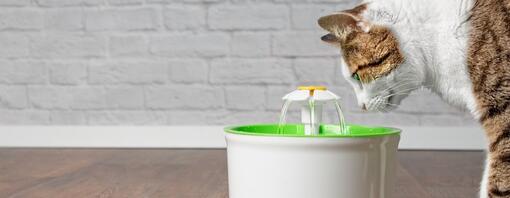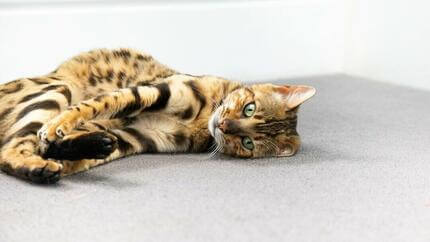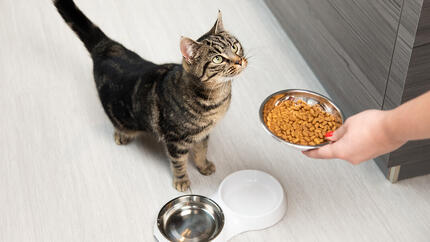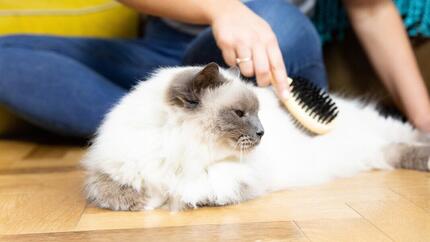
As temperatures soar during the summer, it's necessary to ensure your feline companion stays cool and comfortable. While cats have natural mechanisms to regulate their body temperature, they still require extra care during hot weather. This article explores tips and techniques on how to keep a cat cool in summer.
Understanding How Cats Naturally Stay Cool
Cats have evolved ingenious ways to regulate their body temperature. Their fur acts as insulation, trapping cooler air close to their skin and providing shade from the sun. They also have sweat glands on their paws, helping to cool them when they walk on cool surfaces. Additionally, grooming plays a crucial role.
When a cat licks its fur, the saliva evaporates, creating a cooling effect, which is why grooming is more frequent in hot weather.
Recognising signs of overheating is crucial. Indicators include panting, lethargy, drooling, weakness or confusion and seeking cool surfaces. If you notice any of these signs, take immediate steps to cool your cat down.
Heatstroke can be life-threatening for cats. Ensuring they have a cool, shaded area, fresh water, and a cool environment with fans or air conditioning is essential. Never leave your cat in a car, as temperatures can rise to dangerous levels quickly, even with windows cracked.
Practical Tips on How to Keep a Cat Cool
To keep your cat cool and comfortable, consider the following tips:
1. Provide a Cool and Shaded Area
Create a designated cool spot in your home where your cat can retreat during peak sun hours. A corner with good air circulation or a cozy spot under furniture works well. Use blinds or curtains to block direct sunlight.
2. Ensure Adequate Hydration
Hydration is key. Ensure your cat always has access to fresh, clean water. Place multiple water bowls around the house, especially in cooler areas, and add ice cubes to keep the water cool. Additionally, these ice cubes can be made with meat or fish broth (whichever your cat prefers) to encourage them to drink more water.
3. Use Fans or Cooling Mats
Wondering how to keep a cat cool without AC? A fan is your friend as they help circulate air and provide a cooling effect. Place a fan in the room where your cat spends most of their time, ensuring it's not blowing directly on them. Cooling mats, filled with cooling gel, provide instant relief when your cat lies on them.
4. Groom Regularly
Regular grooming helps keep your cat cool. Brushing removes loose fur and distributes natural oils, maintaining a healthy coat. Consider a summer trim if the coat is long and thick, but avoid shaving completely, as their fur provides insulation against heat.
5. Adjust Feeding Routines
Cats may eat less in hot weather. Make sure they have a good diet and offer smaller, more frequent meals to prevent food spoilage. Ensure fresh water is always available and consider adding ice cubes to keep it cool. It would also be useful to consider increasing the use of wet or semi-moist food over dry food.
6. Keeping Indoor and Outdoor Cats Safe
Provide a cool, shaded area indoors and keep curtains or blinds closed during the hottest parts of the day. For outdoor cats, create shaded spots using umbrellas, tents, or plants. Ensure fresh water is always available and consider a shallow pool or fountain for them to cool down.
7. Monitor Your Cat's Behaviour
If you notice signs of overheating, such as panting, lethargy, or drooling, contact your veterinarian immediately. By following these tips, you can help your cat stay cool and comfortable all summer.
Preventing Heat-related Health Issues
Preventing heat-related health issues is crucial as temperatures rise. Cats are susceptible to heatstroke, a serious condition requiring immediate attention. Recognising symptoms and acting swiftly can protect your cat's health.
>Signs of heatstroke include panting, drooling, rapid breathing, lethargy, vomiting, and collapse. If you observe any of these symptoms, move your cat to a cool, shaded area and provide fresh water. Use a wet cloth or towel to damp the coat with lukewarm water and/or a fan to cool them down, but avoid ice-cold water or submerging them in cold water, as this can cause shock. If your cat's condition does not promptly improve, seek urgent veterinary assistance and transport in a well-ventilated carrier and a cooled car.
Long-term precautions include ensuring access to cool, well-ventilated areas, using fans or air conditioning, and providing fresh water throughout the day. You can also create a cool resting spot with a damp towel or cooling pad in your cat's favourite sleeping area. And remember, it’s never a good idea to leave them inside the car, even for a few minutes.
Being proactive in preventing heat-related health issues ensures your cat remains safe and comfortable throughout the summer. Always monitor your cat's behaviour and seek veterinary help if needed.
Every cat is unique, and their tolerance to heat varies. Overweight cats, flat-faced breeds, and the very young or very old are more at risk. Watch for signs of overheating, such as excessive panting, drooling, or lethargy, and consult your veterinarian if you notice concerning symptoms.
Now that you know how to keep a cat cool in summer, you can ensure they stay comfortable and happy during the entire season. Since we’re on the topic of summer, find out more about the allergies by reading this article on Hay Fever in Cats.



